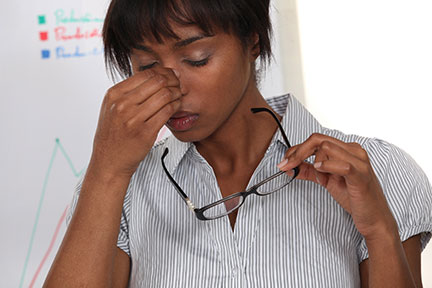
I will never forget when our Student Behavior Research Team was presenting to a group of local teachers in 2015 about our research project examining the effects of a group-based intervention for middle schoolers experiencing traumatic stress. We intended to inform the teachers about the symptoms and consequences of students’ traumatic stress, the group process, and ways they could support both the study and their students. In the middle of the presentation, when I was describing the effects of trauma on students’ academic performance, a teacher stood up and loudly exclaimed, “But what about OUR trauma? Who is helping US?”
Without skipping a beat, the district’s lead social worker offered to talk with him and his colleagues about self-care strategies. I was, frankly, a bit stunned by the interaction and awed by our district colleague’s professionalism and prompt support. How had we not seen this coming? With our focus on the students and the research, were we neglecting the educators who are exposed to serious student trauma every day?
Since then, our researchers and clinicians have made a conscious effort to spread the word about secondary traumatic stress (STS)—the compassion fatigue many professionals experience when they work with individuals who have suffered from trauma—as well as the wealth of resources that are available to help. Although we are not experts on the topic, we believe it is important to contribute to this dissemination of resources by pointing our colleagues to more information about symptoms, organizational supports, and self-care strategies that can help our helpers heal themselves.
When it hurts to help: Symptoms of STS
STS, vicarious trauma, and compassion fatigue are all ways to describe the feelings of sadness, hopelessness, and burnout—and the often co-occurring physical symptoms of sleep disturbances, fatigue, and pain—experienced by those in the helping professions. How often do you see these symptoms, documented by the U.S. Department of Health and Human Services, in yourself or your colleagues or loved ones?
 Cognitive Symptoms |
 Emotional Symptoms |
 Physical Symptoms |
 Behavioral Symptoms |
|
|
|
|
Put on your oxygen mask first, then assist your co-passengers
Just as airlines instruct us to attend to our own needs first during an emergency and then help our fellow passengers, it is critical to focus on self-care when helping others through their difficulties. STS is preventable and treatable, but when ignored, it can lead to burnout, isolation, and further distress.
What you can do to prevent STS
To help prevent yourself and others from experiencing STS, try out these healthy habits until you find ones that work best for you, and then encourage your colleagues to try them, too.
- ✅ Set boundaries and limits to promote a healthy work-life balance that includes a range of activities and relationships
- ✅ Practice relaxation techniques, such as yoga, progressive muscle relaxation, and meditation
- ✅ Express yourself creatively through artwork, writing, crafts, cooking, woodwork, and other methods
- ✅ Stick to a wellness plan that includes exercise, good nutrition, and sufficient rest/sleep
- ✅ Check in regularly with yourself and others to recognize distress early on
What you can do to reduce your STS
If you experience vicarious trauma, here are some actions you can take to reduce your distress.
- ✅ Seek professional help – work with a therapist who specializes in trauma to process your experiences and symptoms
- ✅ Start or join a support group to talk with others with similar experiences about how to cope and rebound from difficult situations
- ✅ Seek out resources offering evidence-based, cognitive-behavioral, and mindfulness training therapeutic approaches
- ✅ Reach out to your supervisor about adjusting your job assignments, schedule, or caseload, at least temporarily
- ✅ Participate in a formal peer mentoring program to learn from and model colleagues’ resilience and coping strategies
- ✅ Gain a sense of mastery in your job role by setting achievable goals and collaborating and problem-solving with colleagues to help you feel confident and in control
What organizations can do collectively
Organizations, especially those supporting employees in the helping professions, should enact policies to promote a safe, healing, and compassionate work culture. Here are some healthy organizational practices to combat STS.
- ✅ Support workplace self-care groups that focus on coping, resiliency, and hope
- ✅ Advance collaboration among staff to establish a positive workplace supportive of teamwork and mutual respect
- ✅ Provide adequate professional development in areas such as de-escalating risky or dangerous situations or recognizing and responding to secondary trauma
- ✅ Provide clinical supervision, including reflective supervision
- ✅ Maintain realistic and diversified roles, responsibilities, and caseloads
- ✅ Help staff to routinely recognize the positive impact they have on students and families and their accomplishments/strengths
- ✅ Encourage staff to use available counseling resources and your Employee Assistance Programs
Resources for ongoing learning
We compiled many of these tips to understand, recognize, and respond to STS from a wealth of available resources. Please use and pass on this information to your colleagues—we are all in this together!
- The U.S. Department of Health and Human Services, Administration for Children and Families, describes STS and offers tips and resources.
- The National Child Traumatic Stress Network describes the effects of STS and offers numerous resources, such as:
- Secondary Traumatic Stress Fact Sheet describes how individuals experience STS, who is at risk, how to identify STS, strategies for prevention and intervention, and essential elements to address STS.
- Secondary Traumatic Stress webinar describes risk factors for and signs of STS in educators, as well as techniques for prevention and self-care.
- Taking Care of Yourself provides a list of ideas for self-care strategies.
